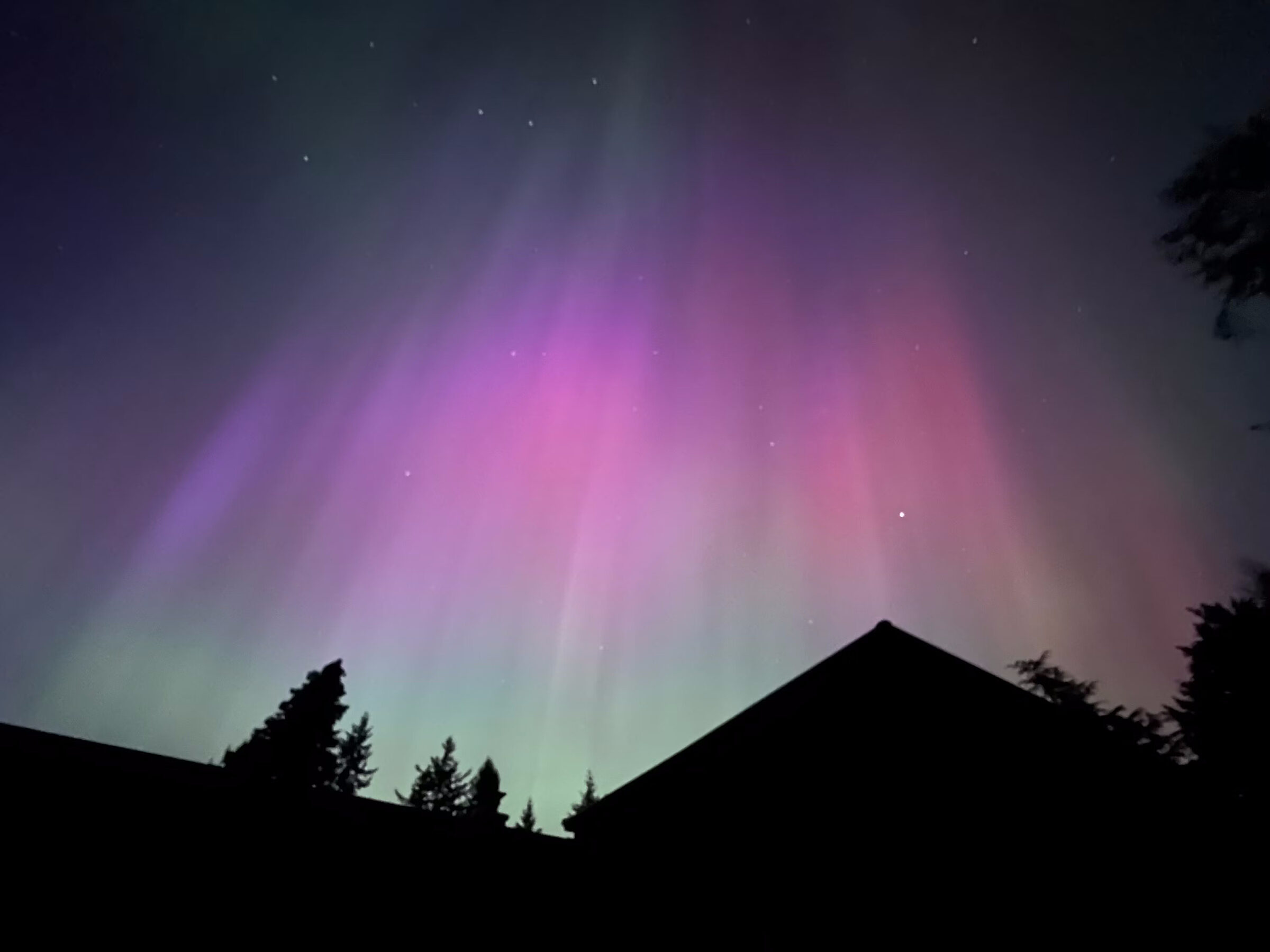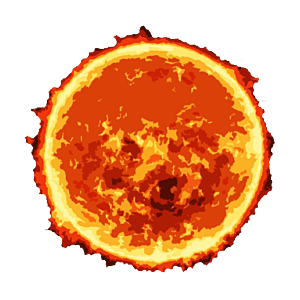The Downlink • May 17, 2024
A certain flair for solar activity
Space Snapshot

As if this year’s total solar eclipse weren’t enough of a spectacle, the Cosmos delivered another magnificent show last weekend when a solar storm caused auroras to stretch much farther from the Earth’s poles than usual. The Sun is nearing the peak of its 11-year cycle of activity, meaning it’s likely to produce even more solar storms like this in the months and years following the peak. This photo of the aurora borealis was shared by Planetary Society member Gene Lewan, whose daughter and son-in-law captured the image from their backyard in Seattle, Washington. Members shared many other amazing aurora images in the online member community. Image credit: Gene Lewan.
Fact Worth Sharing

Green is the most common aurora color, mostly caused by excited atomic oxygen in lower parts of the atmosphere. More intense solar activity is needed to excite atomic oxygen at higher altitudes (causing red hues) or molecular nitrogen at lower altitudes (causing purplish hues).
Mission Briefings


Increased solar activity brings flares as well as storms. This includes a particularly enormous solar flare that erupted from the Sun on May 14, seen at the right-hand side of the above image from NASA's Solar Dynamics Observatory. Solar flares are intense bursts of electromagnetic radiation coming from sunspots on the Sun's surface and are classified into lettered groups according to their intensity, with X-class flares being the most powerful. This week’s X8.7-class flare was the largest solar flare seen in over a decade. Image credit: NASA.

JWST may have found an atmosphere around a rocky exoplanet. Researchers using the space telescope may have detected an atmosphere surrounding 55 Cancri e, a rocky exoplanet orbiting a Sun-like star in the constellation Cancer. The findings from JWST are the best evidence to date for a rocky planet atmosphere outside our Solar System.

NASA has named its first chief AI officer. The agency announced this week that its chief data officer, David Salvagnini, will now also assume the role of chief artificial intelligence (AI) officer. The new role is intended to help ensure that NASA is on the cutting edge of AI technology.
From The Planetary Society


The Planetary Society is advocating hard for space. This week on Planetary Radio, hear stories from this year's Day of Action, in which nearly 100 advocates from across the United States came to Washington, D.C., to speak with their members of Congress about the importance of investing in space. Host Sarah Al-Ahmed (pictured, left) also interviewed the co-chairs of the Congressional Planetary Science Caucus, Representatives Don Bacon (pictured, right) and Judy Chu, who together spearheaded a letter to Congress urging lawmakers to support an increase to NASA’s budget. Image credit: The Planetary Society.

Since its earliest days, space exploration has been a peaceful endeavor. This is, in part, because of the Outer Space Treaty, one of the foundational documents in international space law. Learn more about how the Outer Space Treaty came to be, the principles it sets out for space activities, and the other international agreements it birthed.
What's Up

In the predawn east, look for Mercury low to the east, with yellowish Saturn and reddish Mars above it. Learn more about what May’s night skies have in store.
Wow of the Week

We just can’t get enough of the amazing photos from last weekend’s auroras. Planetary Society member Kelsey Harkness-Jones captured this shot from Llandegla Moors in Wrexham, UK. If you’re a Planetary Society member, you can see more images like this and share your own in the online member community. Image credit: Kelsey Harkness-Jones.
Send us your artwork!
We love to feature space artwork in the Downlink. If you create any kind of space-related art, we invite you to send it to us by replying to any Downlink email or writing to [email protected]. Please let us know in your email if you’re a Planetary Society member!


 Explore Worlds
Explore Worlds Find Life
Find Life Defend Earth
Defend Earth

